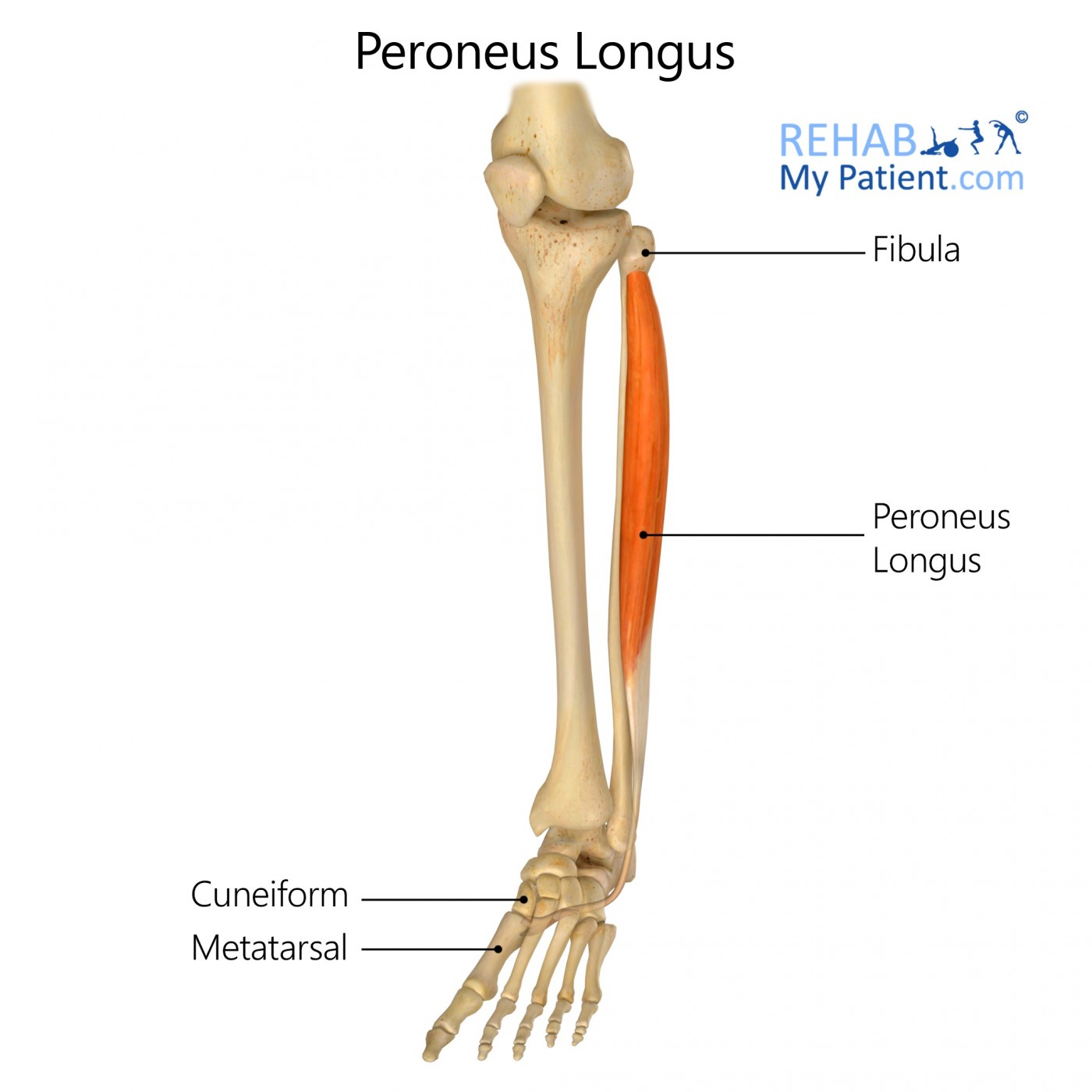
General information
The peroneus longus is a superficial muscle located in the lateral part of the leg. It works to plantar and evert flex the ankle. This muscle is the longest of all three fibularis muscles. It is attached to the fibula head proximally with its belly running down the majority of the bone. The muscle becomes a tendon that runs posterior in the ankle around the lateral malleolus. It continues running underneath the foot and attaches to the first metatarsal and medial cuneiform.
Literal meaning
The long muscle of the brooch, or fibula.
Interesting information
Conditions affecting the muscle are tears, subluxation, peroneal tendinopathy, contusions, myalgia, lacerations, strains and rupture. Various conditions relate to the organ, such as myopathy, paralysis, cancer, neuromuscular disease, and countless others. Symptoms of an injury to this muscle include muscle pain, fever, muscle weakness, muscle spasms, loss of muscle control, swelling, bleeding, bruises, calf muscle tightening, inflammation, bruising, ankle weakness and limited range of motion in the ankle.
Origin
Proximal and head ½ up to 2/3 of the lateral side of the fibula.
Insertion
Crosses the plantar surface of the foot, attaching to the lateral sides of the first metatarsal and medial cuneiform.
Function
Everts and flexes the foot at the ankle. Maintains transverse and longitudinal arches in the foot.
Nerve supply
Superficial peroneal nerve L4-L5, S1.
Blood supply
Medial tarsal artery.
Peroneal artery.

Relevant research
Rehabilitation and physical physicians will often see individuals who are suffering with chronic ankle instability. The main structures that are involved with the stability of the ankle are the peroneus longus and peroneus brevis muscles. Several variations of the muscle-tendon are said to be responsible for the instability in the ankle. Of all the muscles, the peroneus quartus is the most common contributor to instability. Based on a clinical study, the bilateral peroneus muscle holds the key to ankle instability in patients.
Analysis of Physical and Rehabilitation Medicine (2011). Peroneus Quartus and Functional Ankle Instability. Vol. 54, Is. 5, 282-292.
Peroneus longus exercises
Outer ankle lift

Using a small weight that attaches to the foot, lie on the side on a bed or couch. Bend the knees with the injured ankle on top. Extend the top leg off the couch or bed hanging over the edge. Lift the foot upward toward the ceiling for 10 repetitions, with the foot in plantar flexion and another set of 10 with your foot in dorsiflexion. Increase to three sets of 10 in both positions as strength improves.
Inner ankle lift
Using the same weights as the previous exercise, begin this exercise in a sitting position. Sit in a chair with the injured leg crossed atop the good leg. Raise the foot upward to the ceiling for five to 10 repetitions. Take a short rest and repeat the repetitions for another set. Avoid using too much weight in the beginning. Increase to 5- or 10-pound weights as strength improves.
Sign Up
Sign up for your free trial now!
Get started with Rehab My Patient today and revolutionize your exercise prescription process for effective rehabilitation.
Start Your 14-Day Free Trial